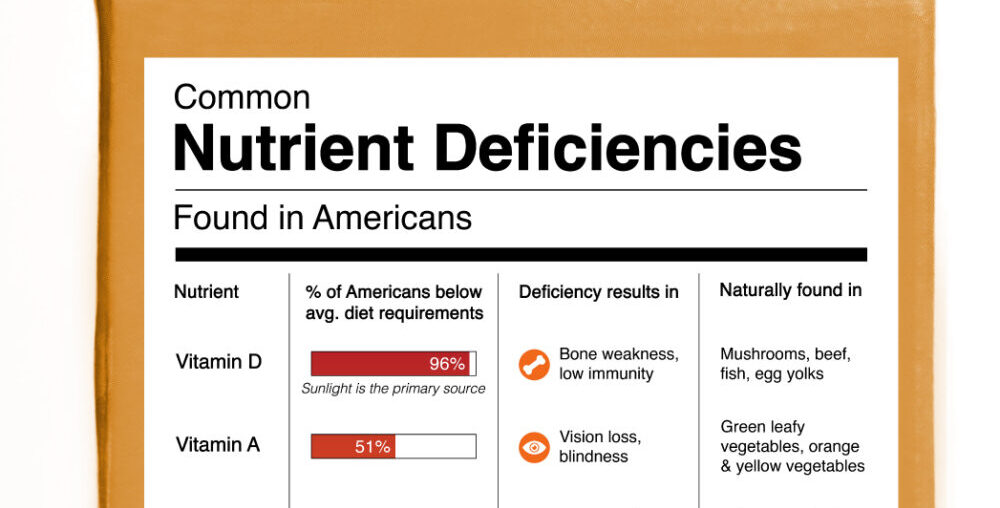The Most Common Nutrient Deficiencies in the U.S.
This was originally posted on our Voronoi app. Download the app for free on iOS or Android and discover incredible data-driven charts from a variety of trusted sources.
This infographic lists some of the American population’s most common nutrient deficiencies along with the symptoms to spot them, and the sources of food they can be found in.
Data is sourced from the Micronutrient Information Center at Oregon State University, accessed October, 2024. They studied how much of the population falls below the estimated average requirement (EAR) for each nutrient.
The EAR is a threshold of dietary intake that meets the needs of half the healthy people in a specific age and gender group. The data in this chart is for adults aged 18 and older.
Symptoms of Common Vitamin Deficiencies
Per the data, most Americans do not get enough calcium or Vitamin D from their diet. However, Vitamin D is particularly difficult to meet through diet alone, as the primary source is sunlight.
Experts recommend at least 15 minutes in the sun per day, though people with darker skin tones may need more.
| Nutrient | % of Americans below avg dietary requirements |
Deficiency Results In | Naturally Found In |
|---|---|---|---|
| Vitamin D | 96% | Bone weakness, low immunity |
Mushrooms, beef, fish, egg yolk |
| Vitamin A | 51% | Vision loss, blindness |
Green leafy vegetables, orange & yellow vegetables |
| Calcium | 50% | Bone weakness, cramps |
Dairy, green leafy vegetables |
| Vitamin C | 43% | Scurvy, fatigue |
Citrus fruits, broccoli, sweet potatoes, tomatoes |
| Vitamin B6 | 15% | Numbness, confusion |
Fish, organ meats, potatoes, non-citrus fruit |
| Iron | 8% | Fatigue, lethargy |
Red meat, poultry, beans |
| Vitamin B12 | 4% | Fatigue, shortness of breath |
Meat, fish, poultry, eggs, dairy |
Deficiency results in aches and pains in the muscles and bones, fatigue, and even depression. Prolonged low levels can lead to osteoporosis—where bones become brittle and fragile, and break easily, also a symptom of low calcium levels.
While Vitamin D occurs naturally in mushrooms, beef, fish, and egg yolks, it’s also added to milk, cereals, and certain foods like breakfast bars to help boost levels.
Meanwhile, it’s estimated that around 50% of the population doesn’t meet their Vitamin A dietary requirement. A lack of it lead to vision loss, skin issues, delayed wound healing, and infertility.
In general, American diets are energy-rich and nutrient-poor, because of a heavy reliance on processed foods and carbohydrates. Dieticians recommend more nutrient-dense foods (fruits, vegetables, certain meats, eggs, dairy, and whole grains) to meet all requirements.
Learn More on the Voronoi App 
How else are these diets impacting the population? Check out The Countries with the Highest Obesity Rates, where America ranks 15th on the list.

